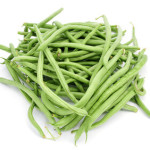 After a lull last year, Kenya French beans farmers have turned to the crop with improved cultivation methods to boost the crop’s potential. This is welcome news as in 2017, the country lost some of its export ground to Guatemala and Morocco, two other major exporters. The main reasons was the increment in production costs. The crop was also hampered by stringent market specifications to enter the European Union (EU) market. Currently, family growers have joined from new areas outside the traditional Central and Eastern farming belts. The newcomers include Kilgoris, Nyamira, Kisii and Trans-Nzoia, among others. The following are some of the factors for the preference for this fresh produce.
After a lull last year, Kenya French beans farmers have turned to the crop with improved cultivation methods to boost the crop’s potential. This is welcome news as in 2017, the country lost some of its export ground to Guatemala and Morocco, two other major exporters. The main reasons was the increment in production costs. The crop was also hampered by stringent market specifications to enter the European Union (EU) market. Currently, family growers have joined from new areas outside the traditional Central and Eastern farming belts. The newcomers include Kilgoris, Nyamira, Kisii and Trans-Nzoia, among others. The following are some of the factors for the preference for this fresh produce.
The first lure is insight on the value addition of intercropping French beans with maize. Farmers in the Rift Valley and Western Kenya have caught on with the incentive to grow the cash crop to bolster their existing maize fields. The farmers cultivate the legume between corn at least two seasons for every single six-month season of maize. This is because the crop is ready for harvest in less than two months after planting. The family growers also prefer the green beans because they can grow well under low-intensity irrigation as they do not require as much overhead water as maize plantations.
Another lure into French bean farming are the attractive market prices. The improved organic means of growth and timely harvest helps family growers make KSH 40 ($0.4) per kilo. The price fluctuates throughout the season with the peak market season of October through May being the most attractive.
Low acreage with high returns is another reason for the enduring popularity of French beans in new cultivation belts. While a small patch of land can generate weekly returns of KSH20,000, an acre’s worth has brought many family growers between KSH150,000 to KSH 200,000 per season. A small portion of land can yield weekly harvests that farmers can reap two times a week with ready direct exports or via middlemen.
The other factor that has contributed to the rise of the French beans value chain in new areas is the accessibility of high quality seeds. Though costly at KSH 9500 ($95), a packet of certified seeds provides resistance against common pests and hence reduces the need for harsh chemicals. This in turn helps the exporters to meet market specifications of low residual levels.
Despite the above impressive factors, French beans growers still face challenges. These include labor intensive growth cycle that is high on fertilizer and water needs. There is also the problem of leaf spot, a fungal disease, as well as blight, from bacteria. The best way that the locals have learned to control the disease includes the use of seeds from government boards. This prevents the need to use fungal controls like Ridomil.
So, the gradual departure from maize due to army worm and unsuitable weather patterns is a blessing in disguise for the growth of French beans. As Kenya has regained its hold on lucrative markets in the West, so are farmers as far off as Trans-Nzoia, a major agricultural zone making do with this horticultural produce. Indeed, farmer groups are now exporting the crop through Global Good Agricultural Practices (GAP) certifications in the Central and Rift Valley regions.

